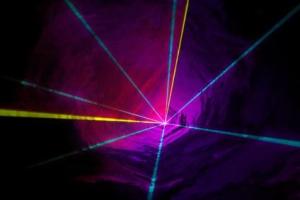
A Northwestern University research team has found a way to manufacture single laser devices that are the size of a virus particle and that operate at room temperature. These plasmonic nanolasers could be readily integrated into silicon-based photonic devices, all-optical circuits and nanoscale biosensors.
 Reducing the size of photonic and electronic elements is critical for ultra-fast data processing and ultra-dense information storage. The miniaturization of a key, workhorse instrument -- the laser -- is no exception.
Reducing the size of photonic and electronic elements is critical for ultra-fast data processing and ultra-dense information storage. The miniaturization of a key, workhorse instrument -- the laser -- is no exception.
The results are published in the journal Nano Letters.
"Coherent light sources at the nanometer scale are important not only for exploring phenomena in small dimensions but also for realizing optical devices with sizes that can beat the diffraction limit of light," said Teri Odom, a nanotechnology expert who led the research.
Odom is the Board of Lady Managers of the Columbian Exposition Professor of Chemistry in the Weinberg College of Arts and Sciences and a professor of materials science and engineering in the McCormick School of Engineering and Applied Science.
"The reason we can fabricate nano-lasers with sizes smaller than that allowed by diffraction is because we made the lasing cavity out of metal nanoparticle dimers -- structures with a 3-D 'bowtie' shape," Odom said.
These metal nanostructures support localized surface plasmons -- collective oscillations of electrons -- that have no fundamental size limits when it comes to confining light.
The use of the bowtie geometry has two significant benefits over previous work on plasmon lasers: (1) the bowtie structure provides a well-defined, electromagnetic hot spot in a nano-sized volume because of an antenna effect, and (2) the individual structure has only minimal metal "losses" because of its discrete geometry.

 Previous page
Previous page Back to top
Back to top







